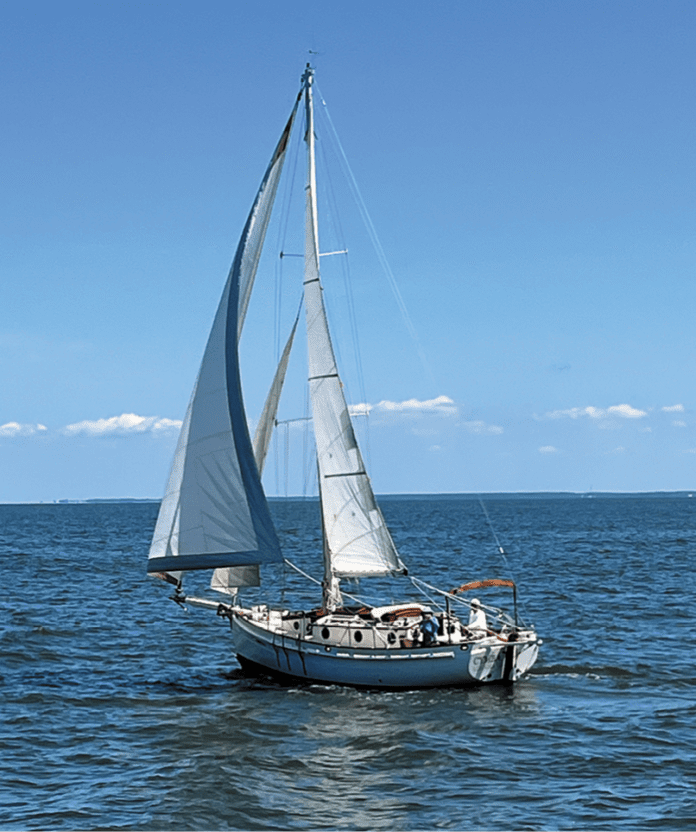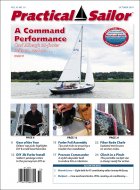You have probably heard people say sailing solo is dangerous or irresponsible. How can you keep a proper watch? What happens if you have an accident? You may have heard stories of people going crazy due to isolation on long solo voyages. Sailing is all about freedom, and I am not going to tell you not to try sailing solo. Nor will I tell you that it is reckless and irresponsible. You are the skipper and one of the great things about sailing is that, as a skipper, you are free to choose, long may that last!
To continue reading this article or issue you must be a paid subscriber. Sign in
Subscribe to Practical Sailor
Get the next year of Practical Sailor for just $34. And access all of our online content - over 4,000 articles - free of charge.
Subscribe today and save 42%. It's like getting 5 months FREE!






































Good article! A few thoughts:
Based on PS testing and cruiser experiences, the original Gibb hooks were very good, ahead of their time, but the thin stamped hooks from Spinlock and others should have been recalled. They do not meet industry standards and are not safe when twisted or side loaded. They can fail under body weight, with fatal results … which has happened.
Docking single handed can be a real trial. One of the most important traits of a singlehander is to know his limits, and in that vein, I have often chosen to anchor out if the combination of wind and tide seemed too risky. How quickly can you move about the boat if things go a little sideways? It’s not worth damaging someone else’s boat, for example, and I can probably move into that slip tomorrow, when the weather moderates, or maybe just after the tide changes. Another alternative can be to request a different slip that is more manageable, for example, an easily accessed bulkhead, or a more protected area of the marina.
For me, the central theme is breaking everything down into simple, one person jobs. It may take longer, so allow more time.
Looking forward to the next installment!
Great article and agree with most of your points.
Great little article. Thanks.
Another good, useful article from PS, thanks Roland.
I appreciate seeing someone burst into print who obviously knows his subject; its all too common these days to see people being completely clueless, and seemingly proud of it!
I look forward to Part 2!
Great article! I’ve done a lot of solo sailing on my 40′ sloop; lots of 6 to 12 hour passages and several two day-ish passages of roughly 250 nm. They’ve generally gone well but your article has shown me how luck may have played a bigger role than I knew! Lots of good stuff here for me to incorporate. Thanks much!
Excellent advice here for the solo sailor. Funny how often the first or last 10 ft of a solo trip is often the most stressful – getting on or off the dock single-handed. Duncan Wells has some good photo-essays on this in his Stress-free Sailing. I also remember asking a very accomplished solo racer how he managed his spinnaker sets alone on long-distance courses. “Sometimes better than others” he admitted. “But if I screw up who cares I just fix it – it’s not like there are a whole bunch of people watching me !”
Provided the tidal stream and wind are not excessive I am happy to bring my 29′ yacht solo into a pontoon finger berth. I can even cope with a not too strong wind blowing me off quite a short pontoon. However, what I need is a cleat on the pontoon in an appropriate position for my mid-ship line. If such a cleat is present it is usually positioned in the middle of the short finger pontoon, where it is of no use to me when coming alongside. I need it about 1 to 1.5 metre from the outer end of the finger pontoon. Do you wish me to explain why with diagrams ? I have had discussions with marina managers, but they insist on putting such a cleat in the middle of the finger pontoon. Some marinas have kindly said that I can always call for assistance if I cannot cope. Given the right equipment I can usually cope, even after dark, when marina staff are often not available. Also, in France, marina staff are not always available at lunch-time, and often there is a “hoop” rather than a cleat at the outer end of the finger pontoon.
When sailing solo I can do most things that a full-crewed yacht can do, but it will take me longer, and (of course) I cannot be at both ends of the yacht at the same time! The secret is planning. When hoping for a marina berth, I will not enter the marina unless I know three things:- my berth location (e.g. K17); which side of the pontoon to enter (e.g. between J and K, or between K and L); and which side of my boat to expect the pontoon (assuming I go in bow first). The first requirement is obvious, the second is because I do not wish to have to turn my boat around before meeting a dead-end, and the third is because I put fenders low for a pontoon, but high when expecting another boat on that side of my boat. Since I am solo, I have 11 fenders, which take some time to distribute. I do not wish to leave the helm when in a marina in order to set or adjust them. So, when calling for a berth on VHF before entering the marina, if I am told just to follow the ‘follow-me’ dinghy, I will say “No, tell me more…” ! And, if I am just given K17 as my berth, I will be taking up further VHF time. I do not wish to be difficult. I call it planning.
Thanks for this well written article. I’m looking forward to part 2.
I have not done any solo sailing on my Baltic 51 but did do a double handed return from Bermuda to Newport 2 years ago. We had an autopilot failure which was not fun. Even two people steering for 5 days was a challenge. The boat could balance and the wheel locked for a few minutes but not long enough to take a nap. If I was solo, heaving too for sleeping would have been the only option. We didn’t try to rig “sheet to tiller” type of steering with the wheel. Probably should have tried. If I was going solo, I’d want a totally redundant system.